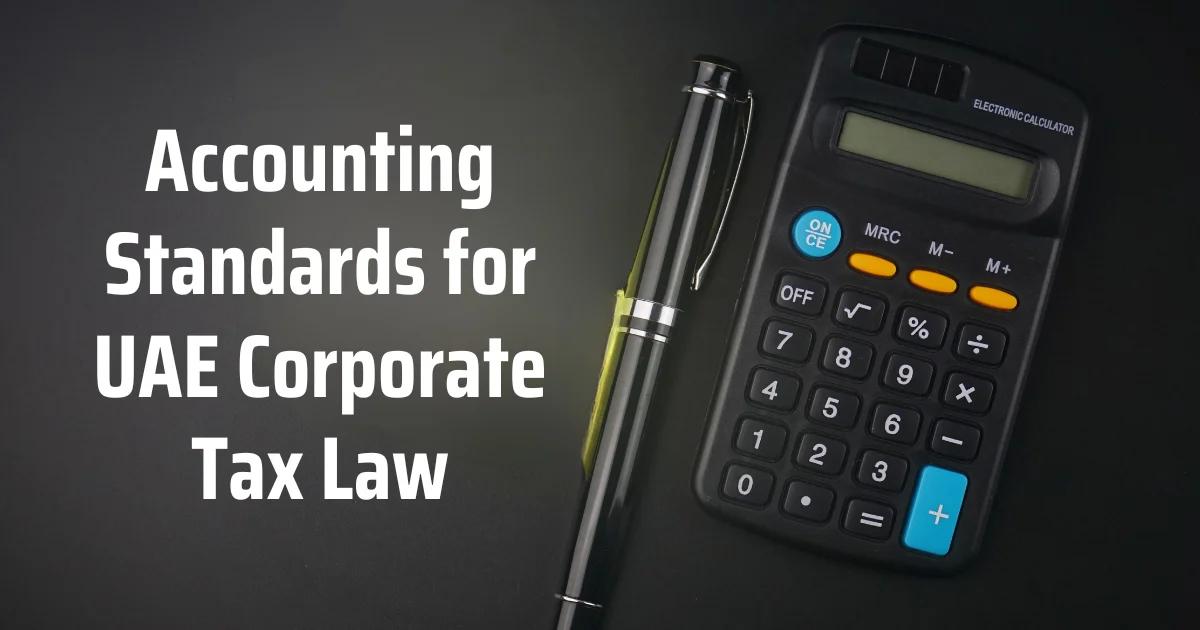Share
Federal Tax Authority released Corporate Tax Guide (CTGACS1) on Accounting Standards interaction with Corporate tax.
Overviews of Guide below
- Taxable person duty to prepare Opening Balance sheet be the closing balance sheet of previous period immediately before first tax period. Example: ABC Company Financials year as per MOA from Jan to Dec. Then CT applies to ABC Company from Jan,2024 onwards. ABC company must prepare Balance Sheet as on 31st December 2023. All Assets and liabilities must be recorded on historical basis not Market value at that date or the full original acquisition cost (if it is already partially depreciated or amortized)
- Taxable person determines Taxable income by using IFRS if turnover exceeding AED 50 Mn in a tax period (if Turnover less than AED 50 Mn may also use IFRS)
- Exempt person must be use IFRS to prepare Financials statement for the taxable activity
- Audit compulsory: (i) Taxable person total Revenue Exceeding AED 50 Mn during relevant tax period (ii) All Qualifying Free Zone Persons (iii) Private pension or social security funds,
- Tax Group while calculate AED 50 Mn revenue need to consider consolidated revenue and also audit only for parent company not for subsidiary members
- Audit performed by a UAE Registered Auditors
- Corporate Tax Purpose two accounting methods are accepted: (1) Accrual Basis: In which Revenue and expenses are included in taxable income in the period in which they are Earned or Incurred. Accrual basis applied for all organizations. The transaction date incurred or earned is the basis for recognition purposes (2) Cash Basis: This applies revenue less than AED. 3 Mn. Revenue and expenses are included in taxable income when Received or Paid. The date of Receipt or payment is the basis for recognition purposes.
- Taxable persons must prepare financial statements on an Accrual basis and may Elect to take into Account Gains or losses on a Realization basis. This means for calculating Taxable income Gains or losses must be taken into account only when an Asset is Disposed of or Liability is Paid/settled. A taxable person other than Banks or Insurance Providers must prepare financial statements on an Accrual basis accounting and may elect to take into Accounting Gains/losses on a realization basis.
- Realization basis means Gains/losses taken into account for corporate tax purposes when the completion of a transaction receives consideration.
- The taxable person elected to use a Realization basis must make certain additional adjustments in respect of relevant Assets and relevant Liabilities when calculating taxable income.
- Related Parties transactions and arrangements must be at the Arm’s length principle. If any excess or lower than the Arm’s length principle Taxable person must be made adjustment in financials to bring transaction or arrangement at the Arm’s length value.
- Any Gains or loss recorded in Taxable income same will not be included or reclassified in futures periods taxable income
- Financials Assets, Financials Liabilities, Immovable property and intangible assets: Owned before first tax period and recorded historical cost basis in opening balance sheet may elect to adjust their Taxable income to exclude gains or losses related to the period preceding the first tax period. The election must be made upon the submission of the first tax return and is irrevocable except under exceptional circumstances and pursuant to approved by FTA.
- Qualifying immovable property: means any immovable property meets all the conditions “Owned before first tax period, measured at historical cost basis and disposal will be after first tax period” About qualifying immovable property there are two methods to compute the excluded amount of the Gain/loss and the taxable person may elect either method. (1) Valuation method: The excluded amount is the amount of the gain that would have arisen had the Qualifying immovable property been disposed of at market value at the start of the first tax period, and considering the cost of the qualifying immovable property as the higher of the original cost and the net book value. (2) Time Apportionment method: The excluded gain/loss amount is calculated by applying four steps to pro-rate the excluded gain/loss based on the period elapsed between the time the asset was purchased and the start of the first tax period.
- Qualifying intangible Asset: Includes Goodwill, trademarks, and patents. “Owned before first tax period, measured at historical cost basis and disposal will be after first tax period” Only one method used to calculate the excluded gain will be the “Time Apportionment method”. A maximum of Ten years can be used to calculate the number of days the qualifying intangible asset is owned before the tax period.
- Qualifying Financials Asset and Qualifying Financials Liability: Only one method is available for computing the excluded gain or loss on Qualifying financial assets and qualifying financial liabilities. Taxable person excludes the amount of Gain / Loss that would have arisen, at the start of the first tax period.
- Corporate tax treatment of movements in other assets or liabilities in the opening balance sheet will follow the accounting treatment.
Singiri Accounting will provide Corporate Tax Registration, Corporate Tax Effect analysis on your business, an Accounting system for Corporate tax, Corporate Tax Credit, Corporate tax withholding Tax, Corporate Tax Opening Balance sheet preparation, Valuation of Qualifying assets and liabilities, etc.
Source: CTGACS1 – Accounting Standards and Interaction with Corporate Tax Dt. November, 2023
*** The information provided should not be interpreted as legal or tax advice ***


